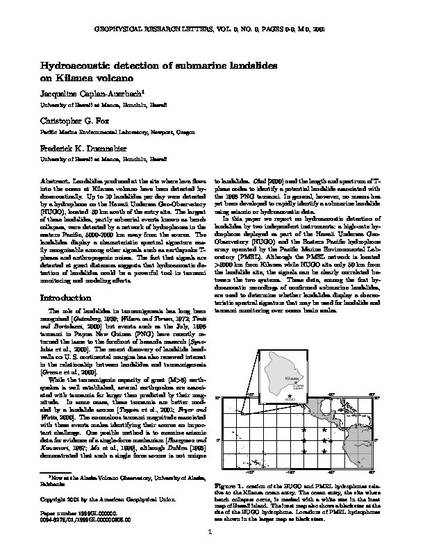
- Kilauea volcano,
- HUGO,
- Hydroacoustic detection,
- Submarine landslides
Landslides produced at the site where lava flows into the ocean at Kilauea volcano have been detected hydroacoustically. Up to 10 landslides per day were detected by a hydrophone on the Hawaii Undersea Geo-Observatory (HUGO), located 50 km south of the entry site. The largest of these landslides, partly subaerial events known as bench collapses, were detected by a network of hydrophones in the eastern Pacific, 5000–7000 km away from the source. The landslides display a characteristic spectral signature easily recognizable among other signals such as earthquake T-phases and anthropogenic noises. The fact that signals are detected at great distances suggests that hydroacoustic detection of landslides could be a powerful tool in tsunami monitoring and modeling efforts.
